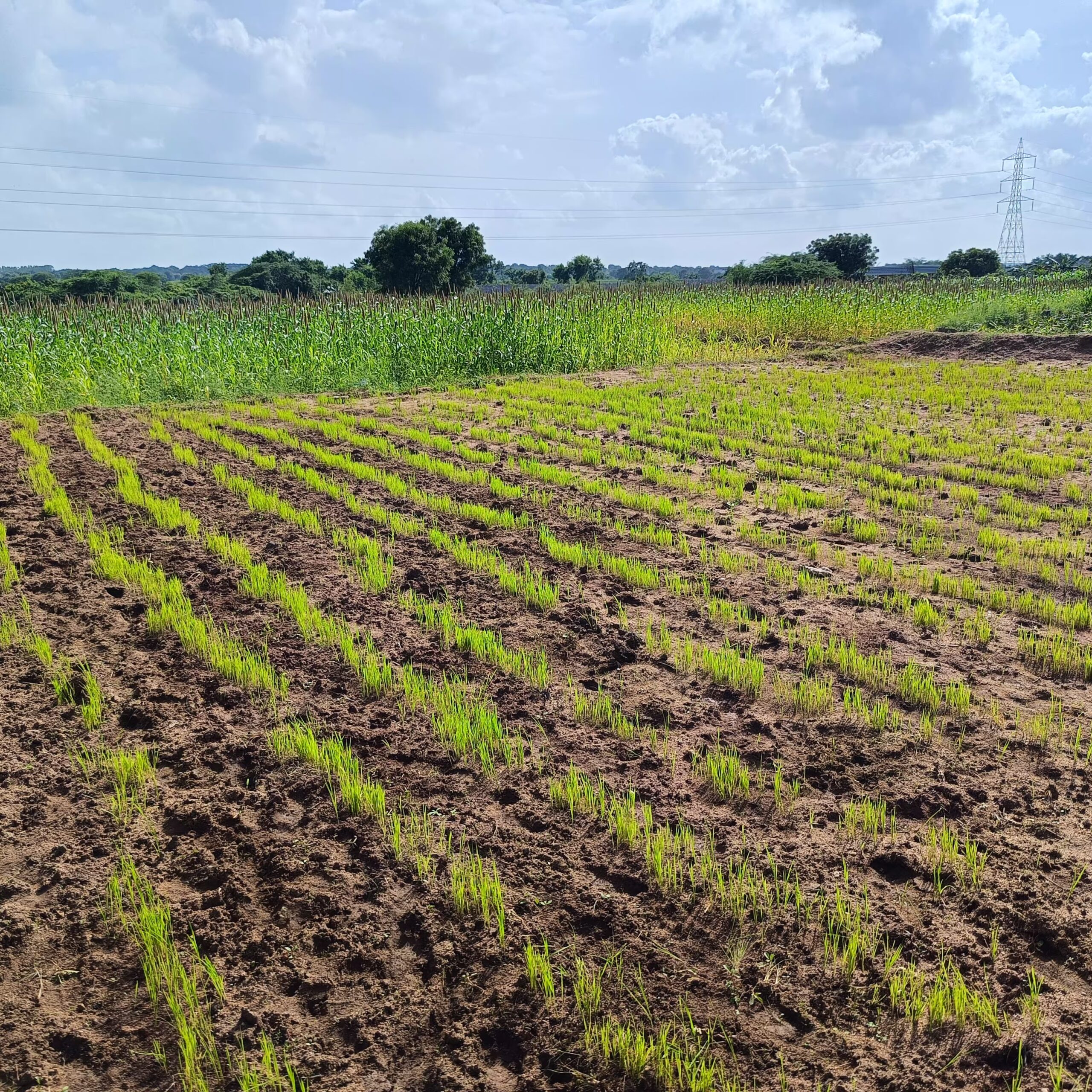Water is the most critical resource in paddy cultivation, but traditional transplanting methods require excessive irrigation, leading to groundwater depletion and inefficient resource use. Direct Seeded Rice (DSR) is an alternative water-efficient approach that reduces water consumption while maintaining yields.
At RegenCrops, we implemented scientific water conservation strategies in DSR to optimize soil moisture, enhance irrigation efficiency, and improve overall sustainability. Below, we outline the key strategies followed by the measurable impacts observed.
- We implemented strategies to optimize water availability by making the most of natural moisture sources, reducing waste, and improving efficiency. By capturing and slowly releasing water into the soil, we ensured better retention during key growth stages, reducing reliance on additional irrigation.
- To maintain soil moisture, a protective layer was applied after planting, helping to minimize evaporation and regulate soil temperature for improved germination. Watering was done based on real-time soil conditions rather than a fixed schedule, ensuring that crops received moisture only when needed, leading to better efficiency and healthier growth.
- Instead of keeping fields continuously flooded, we used an approach that allowed the soil to dry slightly between irrigations, promoting deeper root development and reducing excess water use. Additionally, modifying field layouts improved water distribution, prevented stagnation, and enhanced soil aeration, ultimately supporting stronger, more resilient crops.

The implementation of these strategies resulted in significant improvements in water conservation and crop performance:
- Water usage was reduced by 60-70% compared to conventional transplanting.
- Lower irrigation frequency, while maintaining optimum soil moisture levels.
- Stronger root systems due to controlled irrigation, leading to better crop resilience.
- Yield potential maintained, proving DSR as a sustainable alternative to conventional transplanting.
- Lower methane emission, reducing the carbon footprint of rice farming.
- Improved soil aeration and structure, preventing compaction and nutrient leaching.
- Water savings of up to 60-70% without compromising productivity.
- Stronger root systems and improved nutrient uptake due to controlled irrigation.
- Lower methane emissions, making rice farming more climate-smart.
At RegenCrops, we are committed to scalable, data-driven solutions for water-efficient rice farming.
